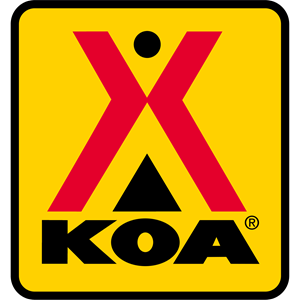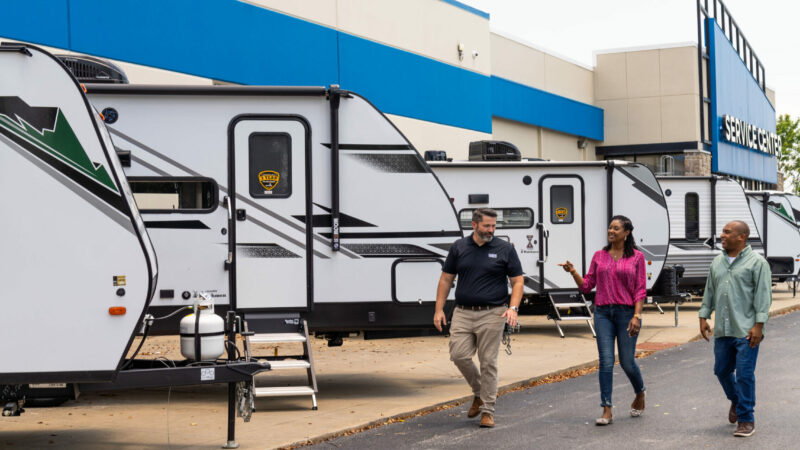KOA: 500,000-Plus Canadians Camped 1st Time in ’22
 BILLINGS, Mont.,– Canada’s outdoor travel sector grew in 2022 as COVID-19 restrictions were lifted, putting an end to many outdoor leisure travel barriers faced across provinces since 2020. In 2022, more than half a million new Canadian households ventured out to experience camping for the first time. This data is featured in the 2023 North American Camping and Outdoor Hospitality Report, an annual independent study commissioned by Kampgrounds of America, Inc (KOA), highlighting North Americans’ evolving travel behaviors seeking adventure and refuge through outdoor travel.
BILLINGS, Mont.,– Canada’s outdoor travel sector grew in 2022 as COVID-19 restrictions were lifted, putting an end to many outdoor leisure travel barriers faced across provinces since 2020. In 2022, more than half a million new Canadian households ventured out to experience camping for the first time. This data is featured in the 2023 North American Camping and Outdoor Hospitality Report, an annual independent study commissioned by Kampgrounds of America, Inc (KOA), highlighting North Americans’ evolving travel behaviors seeking adventure and refuge through outdoor travel.
In addition to the influx of new campers, 2022 also saw a shift in the age of Canadian campers, encompassing a younger demographic with Gen Z (18% of all campers in 2022 vs. 8% in 2021) and Millennials (46% of all campers in 2022 vs. 31% in 2021) seeing notable increases over 2021. While 38% of all campers credit their love for the great outdoors as their reason for camping, younger campers said their camping interest stemmed from family vacation experiences.
Beyond outlining 2022 trends and behaviors, the study also captured an outlook on camper travel plans ahead of the 2023 camping season. The study found that Canadian campers are eager to try various travel experiences this year. The most popular is taking trips to experience natural events such as eclipses, migrations, stargazing, and meteor showers (42%). Following close behind was interest in more food tourism experiences (35%) and visiting small towns (32%).
“Provincial travel truly rebounded this past year with a great number of new campers seeking more opportunities to get outside and connect with nature,” said Toby O’Rourke, CEO and president of Kampgrounds of America, Inc. “Our data shows that Canadian campers will continue to venture out in 2023. They’re eager to try exciting and unique travel experiences, and whether it’s enjoying tent camping, RV travel, or a cabin stay, they’re embracing leisure travel outdoors.”
Additional Canadian key findings from the 2023 North American Camping and Outdoor Hospitality Report include:
- In total, 50% of new campers said they worked during their camping trips, doubling the rate from 2021. As a result, access to quality Wi-Fi became an important amenity for campers, with twice as many saying that access significantly impacted being able to camp more often and for longer.
- The typical Canadian camper was a more experienced camper (69%) and showed an increase in leisure travel compared to 2021 with camping accounting for 32% of their leisure trips.
- Canadian campers (77%) are much more likely to cross the U.S./Canadian border for travel than U.S. campers (55%).
In its ninth year continuously measuring growth and interest in camping and outdoor travel, KOA’s industry-leading camping report broadens its scope to look more holistically at outdoor hospitality and its importance in the larger camping industry. Outdoor hospitality extends across four sectors, accommodation, food and beverage, travel and tourism, and entertainment and recreation – 61% of campers strongly agree that offering services and amenities beyond the campsite or accommodation is pivotal in providing outdoor hospitality. In total, 78% of campers say that outdoor hospitality is important in their travel experiences. In 2022, camping and glamping accounted for 32% of all leisure trips, making camping and outdoor hospitality a crucial travel segment.
To view additional findings from the 2023 North American Camping and Outdoor Hospitality Report or view previous versions of the annual report, visit https://koa.com/north-american-camping-report/.
SURVEY METHODOLOGY
The results of the most recent iteration of the North American Camping and Outdoor Hospitality Report are based on a total of 4,100 surveys completed among a random sample of U.S. (n=2,900) and Canadian (n=1,200) households. Within the U.S. sample of households, results are stratified by Census Region: Northeast (n=725), Midwest (n=725), South (n=725), and West (n=725). Overall, a sample of n=2,900 U.S. households is associated with a margin of error of +/- 1.82 percentage points, while a sample of n=1,200 Canadian households is associated with a margin of error of 2.83 percentage points. All surveys were completed only via an outbound solicitation sent to a randomly selected cross-section of U.S. and Canadian households. In order to calculate overall incidence, the sample of respondents was statistically balanced to ensure that the results are in line with overall population figures for age, gender, and ethnicity. Some results may not add to 100 percent due to rounding.
Source: https://rvbusiness.com/koa-500000-plus-canadians-camped-1st-time-in-22/







